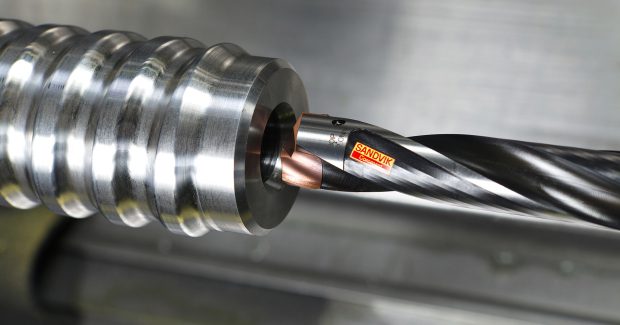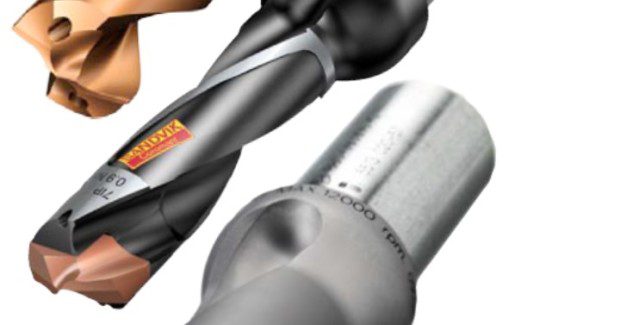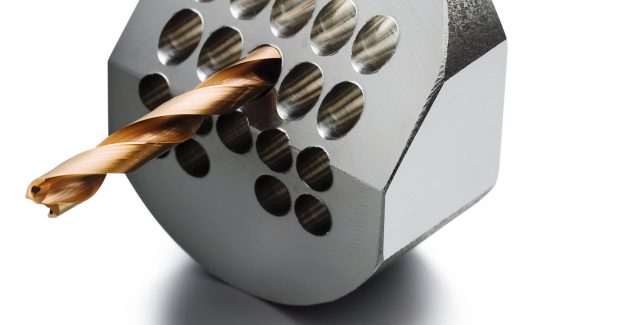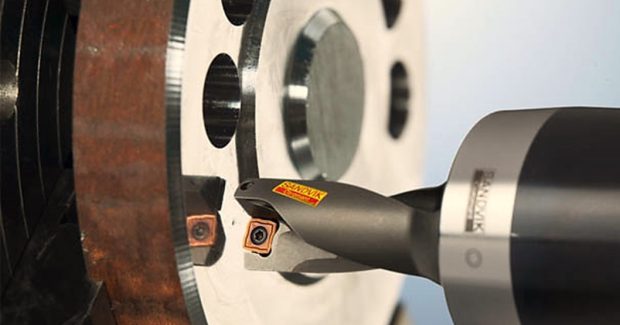The Whole Picture in Holemaking
Today’s holemaking techniques need to be more efficient than ever to meet greater demands and closer tolerances. Ultimately, the tool — and its application — matter. For optimal success, it’s time to see the whole picture.
Posted: October 7, 2014
While holes are relatively simple features, a broad perspective is essential for success. To make the most of each hole, the type of component is a crucial consideration when establishing the tool, method and setup.
Different types of holes vary in diameter, depth and necessary accuracy and finish. Bolt holes, tapping holes, positioning holes, channel holes, holes for machine elements, and weight-reduction or balancing holes all require thorough assessment to select the ideal drill type and process. Many factors go into the perfect hole, and not all are obvious:
- Diameter
- Depth
- Hole configuration (through- or blind-hole, interrupted or not, entry and exit conditions)
- Tolerance and surface-finish demands
- Material
- Setup (stability, single or multiple setups)
- Machine factors (power, stability, strength and speed/feed capabilities)
- Tool-holding quality (drill chucks, integrated tools and spindle interface)
- Coolant supply (flow, pressure, quality and filtering)
- Volume of holes to be drilled (one-off to mass production)
With this information at hand, we can begin to select tools and cutting data. Great new-generation drills make this job easier. Basic choices include:
- Solid-carbide drills
- Exchangeable-tip drills
- Indexable-insert drills
For the most part, one of these three drills will work in most common drilling operations. Other specialty hole types, such as very deep holes, may require other machining processes (boring, reaming, milling, etc.) and tools.
For close-tolerance holes (down to IT8), the solid-carbide drill is the best option. This type of drill is an established tool, having been available in various forms and materials for a while, as a replacement of high-speed steel twist drills. The most modern version of the carbide drill does not have anything in common with its predecessors, apart from the twisted flutes. It is a high-tech cutting tool that combines speed with precision and process security.
With good tool-holding, it can make most types of precision holes in one pass. IT8 is achievable with the proper setup, while IT9 is more realistic with unstable machining conditions. This type of drill’s potential for high penetration rates helps minimize cost per hole.
The next generation of solid-carbide drills is made for machines capable of delivering relatively high cutting data — a feature available in most modern machines. This drill covers a broad size range — with diameters from 3 mm to 20 mm (0.118 in to 0.787 in), for drilling steel depths of up to eight times the diameter — and is ideal for close tolerances. It is a good option for most steel components with flat, inclined, concave, convex or uneven surfaces and crossing holes.
Solid-carbide reconditioning services further extend the life and economy of the drills, and ensure holemaking quality and speed. Innovative new point geometries and cemented carbide grades raise the performance level of this type of drill.
When it comes to deep holes — deeper than five times the diameter in the diameter range of 12 mm to 26 mm (0.472 in to 1.020 in) — limited by tolerances down to IT9, the exchangeable-tip drill is a good choice. The new generation of this drill has made it a reliable choice for many operations with a number of different workpiece types. For high-precision jobs with deep hole depths, this design is ideal — and allows operators to efficiently change the drill tip while it’s still in the machine. Cleverly designed flutes allow for good chip evacuation and a rigid drill body ensures process control.
Exchangeable-tip drills allow for a hole depth of eight times the diameter, with the ability to incorporate steps and chamfers. These drills allow for good surface finish, the elimination of burrs and efficient chip-breaking. New coated-carbide tip grades that enable more balanced wear development extend tool life and improve productivity and reliability in steel and cast-iron. The ultimate result? A lower cost per hole.
Additionally, the exchangeable-tip drill is easy to use, because operators can change the tip in the machine in many applications. All in all, this type of drill has come a long way — with new cutting-edge geometries and a more secure, high-precision interface between the tool body and the tip.
The modern indexable-insert drill is a very cost-effective solution for many operations with a diameter range of 12 mm to 63 mm (0.472 in to 2.50 in) — when hole depths are in the range of two to five times the diameter and the tolerance is IT12 or more. Having said that, users can improve the tolerance capability through presetting and adjustable tool-holding.
Indexable-insert drills are an efficient and reliable choice for a large number of different operations, materials, hole configurations and hole sizes. Drills with step technology have evolved continually since their introduction. As with all indexable-insert tools, however, precision is limited.
As a stationary or rotating tool, the indexable-insert drill offers a selection of grades and geometries to optimize all types of operations: entry surfaces, angled surfaces, pre-drilled holes, crossing holes, chamfers and steps, etc. Generally, this type of drill also works in boring operations and helical interpolation. Using radial adjustment, it’s possible to make holes larger than the drill itself, and to improve the tolerance.
Choosing the right drill out of these three types can help you optimize holemaking in a variety of operations. When performance, quality and process security are priorities, selecting the right tool for the operation has never been more critical. To this end, it’s essential to determine the parameters related to various drilling-operation variations. From here, you can establish best practices for your shop — and achieve the lowest cost per hole, no matter the job.
An overview and demonstration of the Corodrill 860.
The modern solid-carbide drill is ideal for making holes with tolerances as close as IT8 with high penetration rates. This new type of solid-carbide drill, CoroDrill 860, was designed for machines capable of delivering relatively high cutting data. This drill covers a broad area of sizes, with diameters from 3 to 20 mm (0.118 – 0.787 inches), for drilling steel of depths of up to eight times the diameter.
An overview and demonstration of the Corodrill 870.
The exchangeable-tip drill is a good choice for a large range of holes limited by tolerances down to IT9 and often deeper than five times the diameter. CoroDrill 870 represents the new generation of this type of drill and is a reliable choice for many operations and a number of different workpiece types. The precision capability, hole depth range and easy tip-changing features are added benefits.
An overview and demonstration of the CoroDrill 880.
The indexable-insert drill is a very cost-effective solution for many operations across a large diameter range, when hole depths are between two and five times the diameter and the tolerance is IT12 or more. The CoroDrill 880 offers high productivity and versatility in all types of workpiece materials. It is the efficient and reliable choice for a large number of different operations, materials, hole configurations and hole sizes.
Sandvik Coromant, 1702 Nevins Road, PO Box 428, Fair Lawn, NJ 07410-0428, 201-794-5000, Fax: 201-794-5257, www.coromant.sandvik.com/us.



















